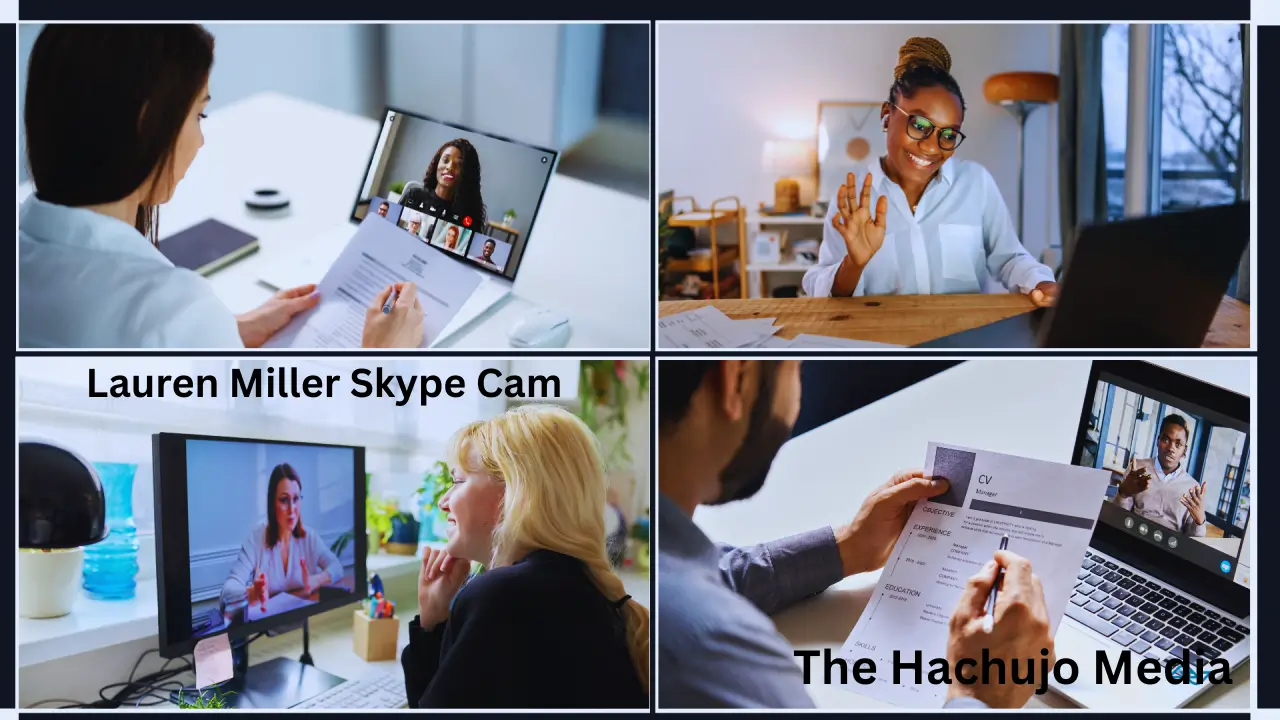The phrase “Lauren Miller Skype Cam” has become a noteworthy topic of interest in the current digital era, where virtual connections have become an essential element of our everyday lives. This phenomena raises questions about digital identity, privacy, and the wider ramifications of video streaming platforms in addition to capturing the development of communication technology. We explore the beginnings, significance, and prospects of this fascinating phenomena in our blog post.
Gaining insight into the popularity of “Lauren Miller Skype Cam”
The Origins
The idea behind a “Skype cam” dates back to the early days of digital communication, when video calls were a ground-breaking means of establishing connections between people who lived far apart. Skype, a pioneer in this domain, allowed users to see and talk to each other in real-time, effectively shrinking the world. However, who is Lauren Miller, and how did her name come to represent this facet of online communication?
Lauren Miller: Although it can be difficult to pinpoint the exact person, “Lauren Miller” has come to symbolize the wider usage of webcams in both personal and professional contexts. The term became ingrained in internet culture as a result of a number of viral incidents or well-known allusions that attracted public interest.
The Influence of Digital Culture
The phrase “Lauren Miller Skype Cam” has become more than just a moniker; it now represents a shift in culture toward virtual communication. Among the main causes of its impact are:
Increased Accessibility: Video calls became more common in households and workplaces as internet accessibility increased throughout the world.
Cultural Representation: It illustrates a change in our understanding of interpersonal relationships by embracing digital platforms for both informal and official correspondence.
Privacy Concerns: The extensive use of webcams has raised awareness of privacy issues, sparking discussions about data protection and permission.
The Influence of Digital Culture
The phrase “Lauren Miller Skype Cam” has become more than just a moniker; it now represents a shift in culture toward virtual communication. Among the main causes of its impact are:
Increased Accessibility: Video calls became more common in households and workplaces as internet accessibility increased throughout the world.
Cultural Representation: It illustrates a change in our understanding of interpersonal relationships by embracing digital platforms for both informal and official correspondence.
Privacy Concerns: The extensive use of webcams has raised awareness of privacy issues, sparking discussions about data protection and permission.
Video Streaming Technology’s Consequences
Privacy Concerns and Ethical Considerations
Consent and Surveillance: Given how common cameras and video platforms are, questions concerning consent and the possibility of illegal surveillance are brought up. Users need to be aware of how their data is utilized and who can view their video feeds.
Data Security: It is crucial to make sure that video data is secure when it is being sent via networks. This entails being wary about phishing attempts and utilizing encrypted platforms.
Impact on Mental Health: “Zoom fatigue,” which is caused by constant video contacts, can have an adverse effect on mental health. It highlights how important it is to balance screen time with offline pursuits.
Changes in Education and the Workplace **Remote Learning** The incorporation of video technology in education has changed learning, enabling flexibility and accessibility to students globally.
Virtual Workspaces: In distant work settings, video communication tools have become indispensable, promoting cooperation across geographic borders.
Upcoming Developments in Video Communication
The future of video communication is bright as technology develops further, with new trends like:
Augmented Reality (AR) and Virtual Reality (VR): These technologies are set to enhance video communication by generating immersive experiences.
AI-driven Personalization: By adjusting to user preferences and improving communication effectiveness, artificial intelligence may provide more individualized interactions.
Conclusion
One example of how digital communication is changing is the “Lauren Miller Skype Cam” phenomena. Knowing how video technology affects privacy, culture, and engagement is essential as we continue to navigate this virtual world. We can take advantage of these tools while protecting our digital identities if we remain vigilant and aware. The future of video communication promises to connect us in more creative and secure ways, whether for personal or business purposes.













